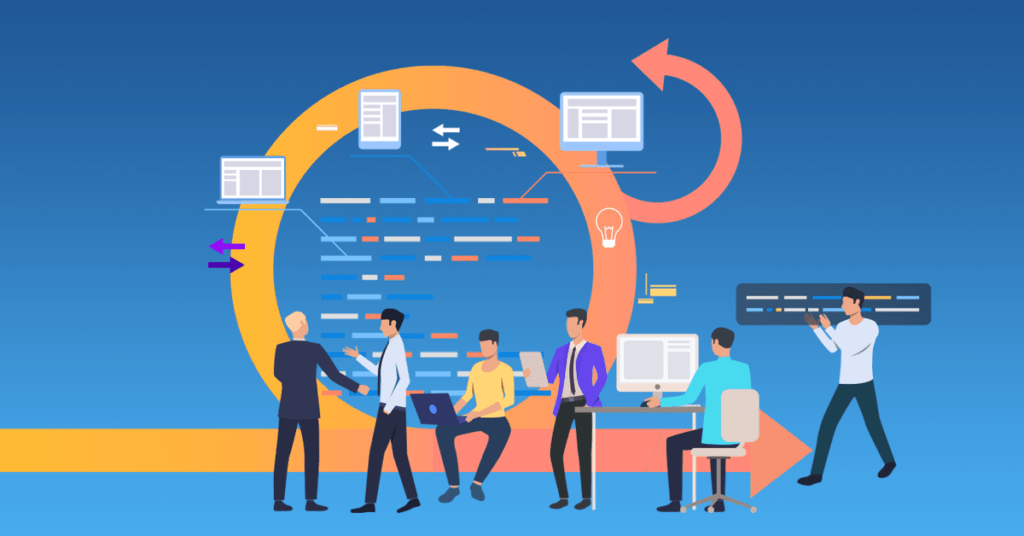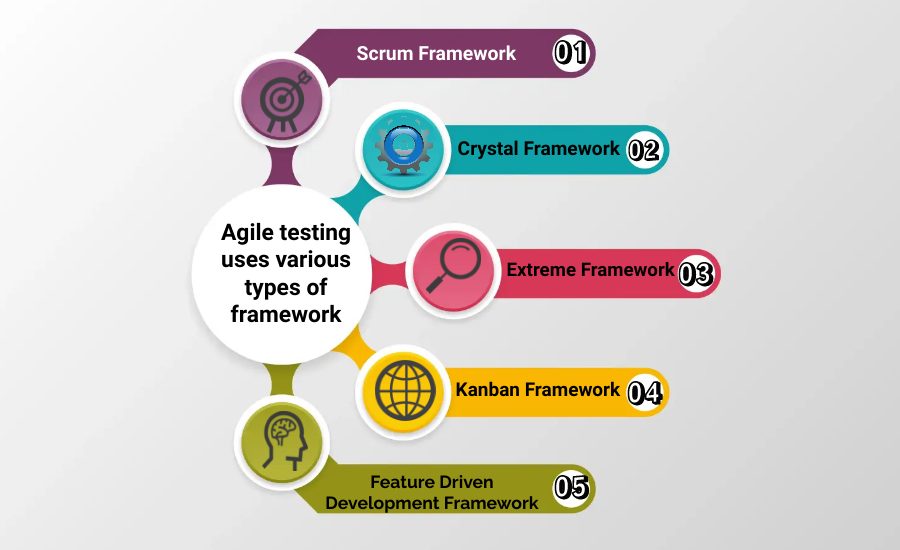Agile testing is a software testing methodology where the testing is carried out as and when the development is made or the changes are being made in the already existing software. Hence, testing is done continuously when the new features are being added. This testing methodology requires coordination and communication between developers and testers.
Agile Requirements Design is nothing but an end-to-end requirements gathering,

test automation and test case design tool which drastically reduces manual testing effort and enables organizations to deliver quality software to market earlier and at less cost. It is an industry-proven, continuous testing tool used to create models and generate test cases to help development and QA teams unlock the full value and capabilities of Model-Based Testing (MBT).
Agile requirement design can model both, negative and positive test cases and automation scripts
Advantages of Agile Model
- Customer satisfaction with least defects and fulfilled requirements
- Changes can be easily made when the project is under development
- Late changes can also be worked upon
- Agile testing requires limited planning to be done beforehand
There tends to be communication between business people and developers.
Disadvantages of Agile Model
- It is difficult to assess the amount of effort required at the beginning of the software development life cycle.
- Only senior programmers are capable of taking the kind of decisions required during the development process. Hence it has no place for newbie programmers, unless combined with experienced resources.
- The project can be taken off track as and when the customers are not sure about the final outcome that they want.
Agile requirement Design
The Agile requirement design does not require a language such as JAVA or PHP as agile usually refers to principles that are applied during development. Agile is a toolbox which provides a set of methods which help the developer in reaching the developer goals. The process requires extensive interaction between the customer, business analyst or whoever produces the requirement from the client. The work has to be carried out under proper documentation. Agile requirement Design allows to generate executable automation scripts.
The idea carried out in ARD(Agile Requirement Design) is to reduce the testing from the manual processes used when developing test cases from requirement and also to Automate the process so the testing team can keep pace with their development process.
In the case of ARD, the team reduces the process of creating and writing the test cases manually and automatically generates the optimal set of test cases and testing artifacts using MBT. MBT is a process which is carried out for automating and generating the test cases based on flow charts.
Using the ARD and MBT method, the testers can benefit in the following ways:
- Automatically generate data from the flowchart model
- Import and export test cases and data
- Adapt new test execution technologies
Create a model with enough details to develop the as per the given requirements
ARD has a seperate toolbox which needs to be installed in the systems. The ARD works based on the model files that have been saved in the system.
The ARD toolbox consists of a canvas where the flowchart representation of the test cases has to be created.The path is used inorder to define the start block and end block. Once the flowchart representation is done, the file has to be saved in the system locally with a name and location. The flowchart representation consists of blocks which are used to define the step that has to be carried out. It provides an accurate test case generation.
ARD also consists of a validation tool which helps in figuring out the errors that are present in the flowchart generated.Once the flowchart is rectified with no validation errors, the test cases are generated automatically based on the flowchart.
Agile testing is recognised as an integral part of Software development. The agile requirement design overcomes the issues faced when the new requirements are being added during development/ testing. New additions can be made during the development/ testing process.
SCHEDULE MY CUSTOM CONSULTATION
Click here to know how our customers maximize on product testing by utilizing agile testing methodologies. A good Testing team contributes to delivering a robust and successful product.

Difference between Agile Testing and Other Testing Methodologies
- In comparison with other testing methods, agile testing has an incremental approach where previously existing functionalities are also tested with the new changes being made.
- The coordination and communication between the tester and the customers maintains awareness of requirements for the tester for the features that are being developed.
- The project does not require a comprehensive requirement document since there is frequent contact between the clients and the testers.
- Agile testing method is cost effective and can be submitted in a time frame with complete customer satisfaction
The agile methodology is used more frequently in comparison to the waterfall model of testing. The agile testing can be carried out at an early stage of development. It is used most frequently when the customer is not sure about the requirements. The process of testing can be made easier as new additions are being made to the development process.
Every model of testing such as the V model , Agile model and the waterfall model has its own set of advantages and disadvantages. However, the waterfall model can be used when the requirement provided by the customer remains intact and unchanged. This model of testing can be used only when no change in requirement will be added. The V- Model can be used when the project is extremely long running and has a wide range of functionalities. The V model can also adapt to the changes that are made in requirements. However, in order to complete the testing in a short span of time with customer satisfaction even when the requirements are being changed, Agile models are extensively used.
The Agile testing method is carried out in the following steps:
- Implementation: In the process of implementation, the model is transformed into an executable code by the developer
- Test : The test is carried out for validation and verification by the tester
- Deployment: It is done to ensure that it is ready to deliver and meets the requirements
- Configuration Management: Artifacts are controlled and managed by the team
- Project Management: Directs all the activities throughout and manages the risk and making sure the project will be delivered to the client on time
Frameworks in Agile Testing

A framework is a set of processes that has to be carried out in order to satisfy the customers and also to carry out the iterations quickly.
Agile testing uses various types of frameworks out of which the most popular frameworks are :
- Scrum Framework
- Crystal Framework
- Extreme framework
- Feature Driven Development Framework
- Kanban Framework
Scrum Framework:
A scrum framework is an approach to project management. Scrum might be for you if your organization is looking for a lightweight, team-based approach to agile project management. Scrum describes a set of meetings, tools, and roles to help teams structure and manage their work.
Advantages & Disadvantages of having a scrum framework:
- The advantage is that it is easy to understand and can help to discuss issues daily.
- The disadvantage is that the scrum framework allows only a few number of people to discuss. .It also builds pressure on workers due to short and frequent deadlines.
Crystal Framework:
Crystal is an agile framework focusing on individuals and their interactions, as opposed to processes and tools.Crystal Method involves frequent delivery, close communication, and reflective improvement.Crystal methodology is one of the most lightweight and flexible approaches to develop software.This method most importantly focuses on Teamwork, Communication, Simplicity of the product, responding and reporting correctly , reasoning.
The crystal method has three sub methods known as the Crystal Clear, Yellow method and Orange method and each of these are characterized based on the duration of the project and the number of employees involved in a team.
The crystal framework also has a few advantages and disadvantages.
- The advantages are that it facilitates transparency and communication in the team.
- The disadvantage is that it lacks documentation which can further lead to confusion.
Extreme Framework:
Extreme Programming (XP) is an agile framework that emphasizes producing higher-quality software to please customers as well as the more specific goal of making life better for the engineers developing it. The extreme framework involves qualities like communication between the team members, simplicity of the project, courage to speak about what is affecting the effectiveness of the project, respect among team members and immediate feedback during the development/testing stage.
This is a cost effective method and the team members are accountable for any issues that occur.However this method does not emphasize much on the quality of the code and is not ideal when the developers are not present in the same location.
Feature Driven Development Framework :
This framework is more inclined towards progressing the features of the project. This framework is usually preferred when the project is a large scaled one.This framework is customer-centric, iterative, with the goal of delivering software results often and efficiently. FDD allows teams to update the project regularly and identify errors quickly.
This framework allows larger teams to move products forward with continuous success. The major drawback of this framework is the lack of documentation which leads to confusion and this framework cannot be used in small scale projects. Also, it is highly dependent on lead developers and programmers.
Kanban Framework :
Kanban allows the software to be developed in one large development cycle unlike Scrum framework which is more iterative. The three basic principles of the kanban framework is to visualise the workflow, limit the amount of work in progress and to enhance flow.This method of framework is beneficial especially when the requirements keep changing. This method has shorter cycle times hence the deliveries are made at a much faster rate with customer satisfaction. The main objective of implementing Kanban is to identify potential risks that can occur in the process and fix them. Kanban’s goal is that workflow should proceed smoothly at an optimal speed.
A standard issue for failing Kanban is not taking Work in Progress limits seriously. If this is not taken into account, the overall process gets affected and the kanban framework collapses.
TO CLOSE MORE DEALS FASTER
Click here to know how our customers maximize on product testing by utilizing agile testing methodologies. A good Testing team contributes to delivering a robust and successful product.


